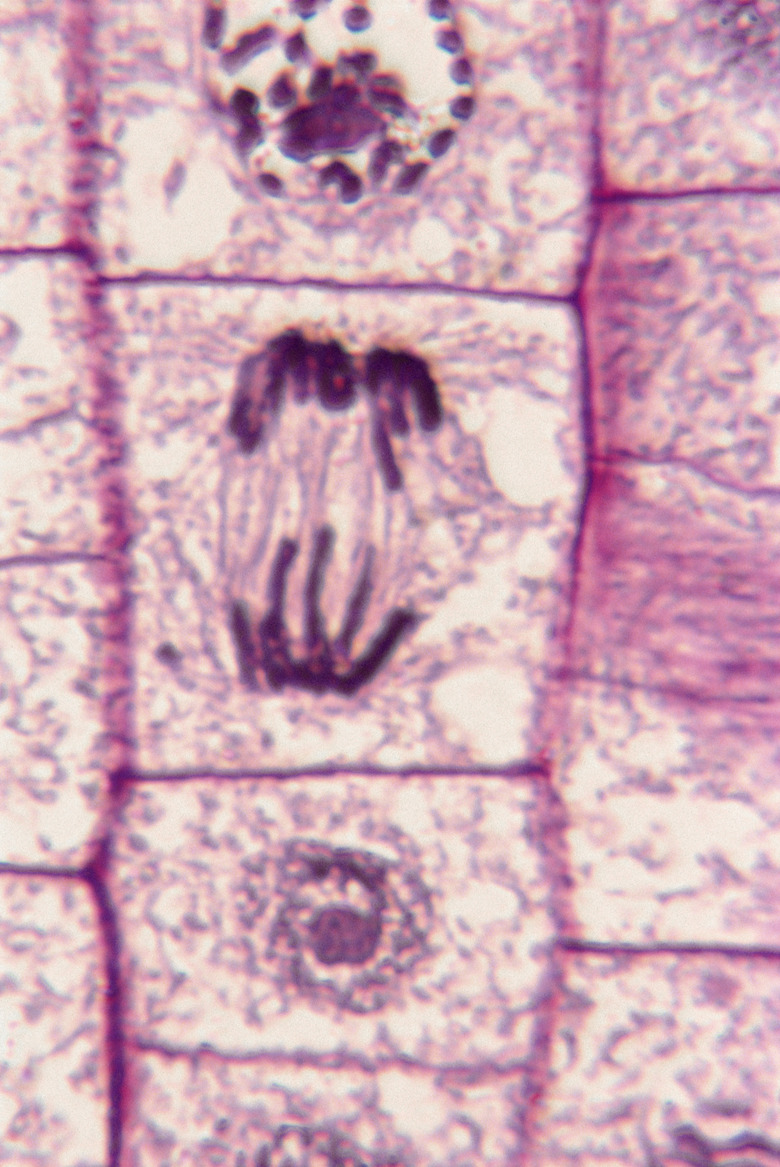How Does The Cytoplasm Divide Between Daughter Cells Following Mitosis?
Without cell division, there would be no life on Earth. Cell division is necessary for growth, maintenance, homeostasis and both sexual and asexual reproduction.
Every species from bacteria to humans creates daughter cells from a mother cell. The most common method of dividing is a process called mitosis. Mitosis duplicates and splits the DNA — the chromosomes — within a cell so each daughter gets a full set.
To finish the job, there's a final step called cytokinesis. Cytokinesis is completed once the cytoplasm of the cell is being divided between the daughter cells successfully to create two fully formed new cells.
Mitosis
Mitosis
Although mitosis in different types of organisms shares many characteristics, there are some differences. In this article, we're going to focus on the specifics of animal cell division, although many of these steps are common in other eukaryotes as well.
In animals, each cell combines tiny fibers to create a cord called the spindle. The spindle stretches through the middle of the cell, DNA duplicates and condenses into visible chromosomes, then the nuclear membrane begins to fade from view and breaks down.
Fibers from the spindle connect to the pairs of chromosomes and pull them to different sides of the cell. That completes the preparation for division.
The Cleavage Furrow
The Cleavage Furrow
After the division of the nuclear material is completed and the nuclear membrane begins to fade from view, the cell develops a ring around its center. The ring is a narrow furrow called the cleavage furrow. The direction of the spindle directs the orientation of the cleavage furrow. If you think of the spindle as a long pole, the cleavage furrow is a ring around the center of the pole.
This is important, because the cell is like a ball, which means it could split in half along any line through the center. But if the cleavage furrow were oriented along a different axis, the chromosomes might not divide equally between the different halves, which is essential as the cytoplasm of the cell is being divided.
The Cytoplasm of the Cell Is Being Divided By the Contractile Ring
The Cytoplasm of the Cell Is Being Divided By the Contractile Ring
Imagine you have a round balloon. If you wanted to shape it into separate halves, you'd place your hands around the middle of the balloon and squeeze. Cytokinesis happens the same way, except that there are no hands from the outside to give the cell a squeeze.
Instead, an internal ring built of the proteins actin and myosin pulls tight. Actin and myosin are the same proteins that contract your muscles, and the ring they make around the center of the cell is called the contractile ring.
The contractile ring shrinks right through the center of the cell, evenly dividing the cytoplasm between the two halves. This indicates that cytokinesis is completed and the cell has been replicated.
Meiosis and Gamete Production
Meiosis and Gamete Production
Cell division for sex cells (aka gametes) proceeds in a different fashion. The overall process of cell division for sex cells is called meiosis. Meiosis has several differences from mitosis — the biggest being that one mother cell with a full complement of DNA ends up as four daughter cells, each with one half the full complement of DNA.
Besides going from diploid to haploid, another big difference between mitosis and meiosis with egg cells in particular is that cytokinesis happens asymmetrically. That is, rather than a cell division producing all same-sized daughter cells that equally share the cytoplasm, each division provides the vast majority of the cytoplasm to what ends up as the egg cell.
Once the nuclear membrane begins to fade from view, the DNA is divided, and cytokinesis is completed, the other entities (the non-cell entities) are called polar bodies. These polar bodies don't contain enough cytoplasm (and the organelles/nutrients within it) to survive.
Cite This Article
MLA
Gaughan, Richard. "How Does The Cytoplasm Divide Between Daughter Cells Following Mitosis?" sciencing.com, https://www.sciencing.com/cytoplasm-divide-between-daughter-cells-following-mitosis-13177/. 20 May 2019.
APA
Gaughan, Richard. (2019, May 20). How Does The Cytoplasm Divide Between Daughter Cells Following Mitosis?. sciencing.com. Retrieved from https://www.sciencing.com/cytoplasm-divide-between-daughter-cells-following-mitosis-13177/
Chicago
Gaughan, Richard. How Does The Cytoplasm Divide Between Daughter Cells Following Mitosis? last modified March 24, 2022. https://www.sciencing.com/cytoplasm-divide-between-daughter-cells-following-mitosis-13177/
